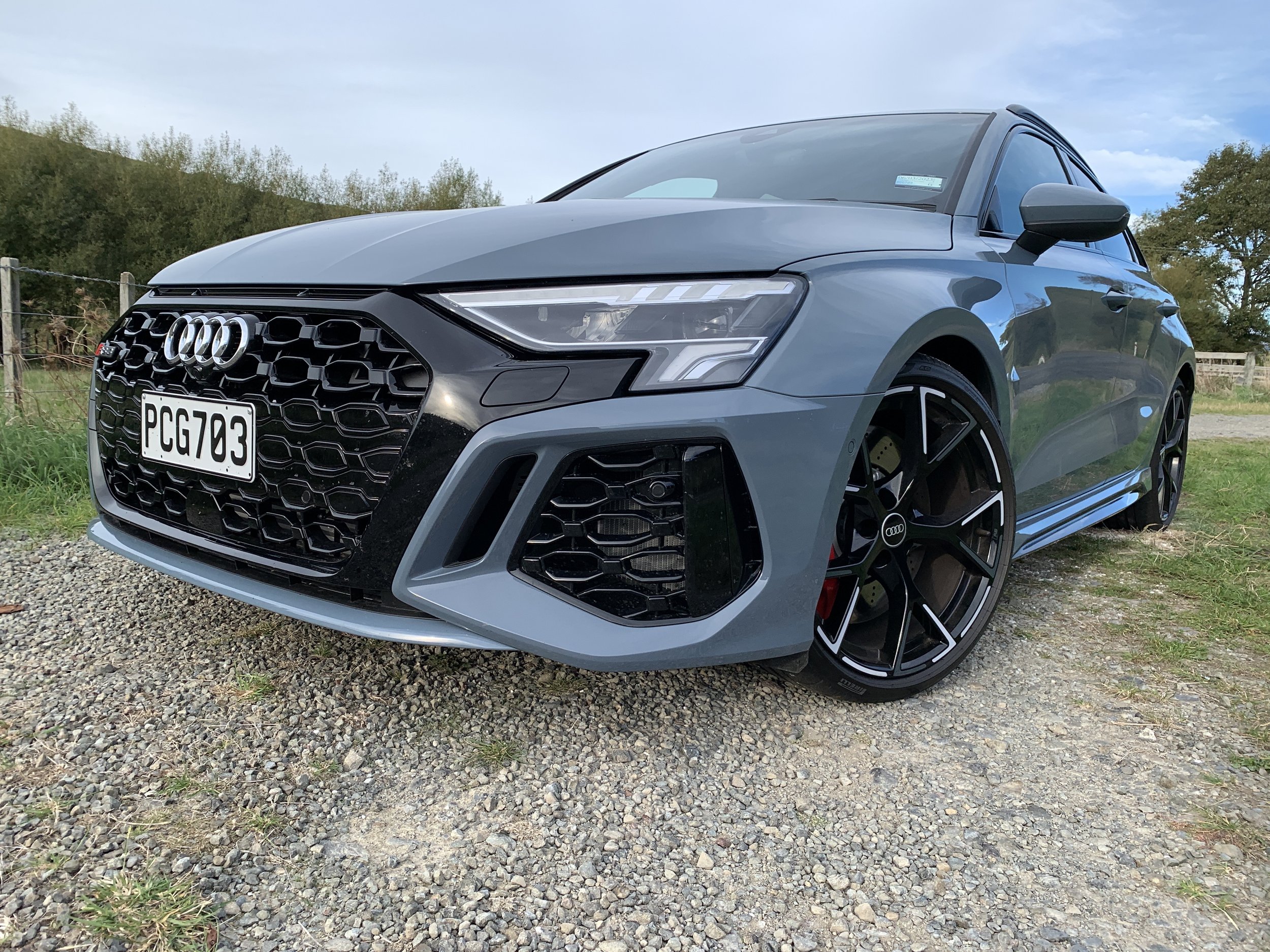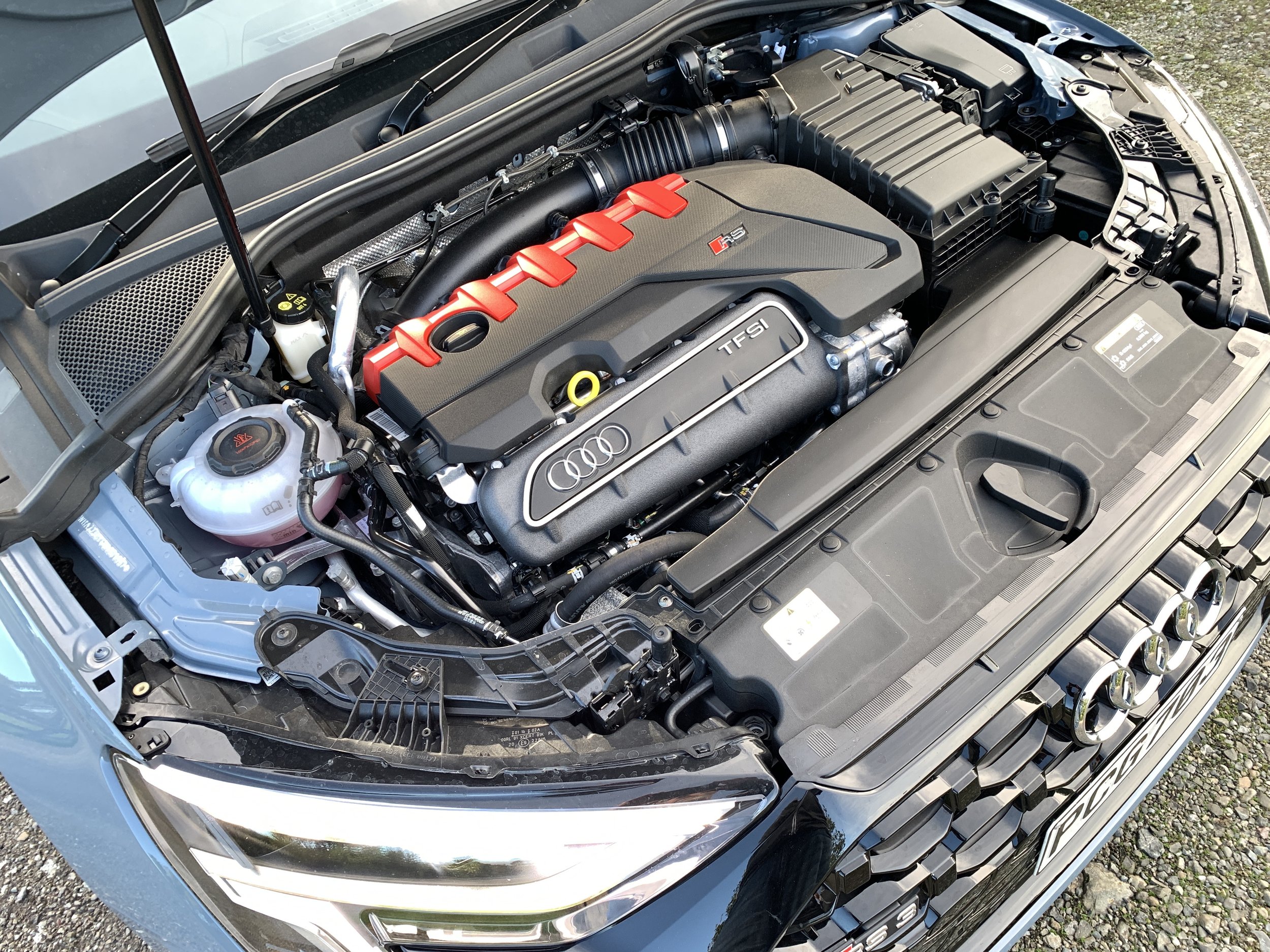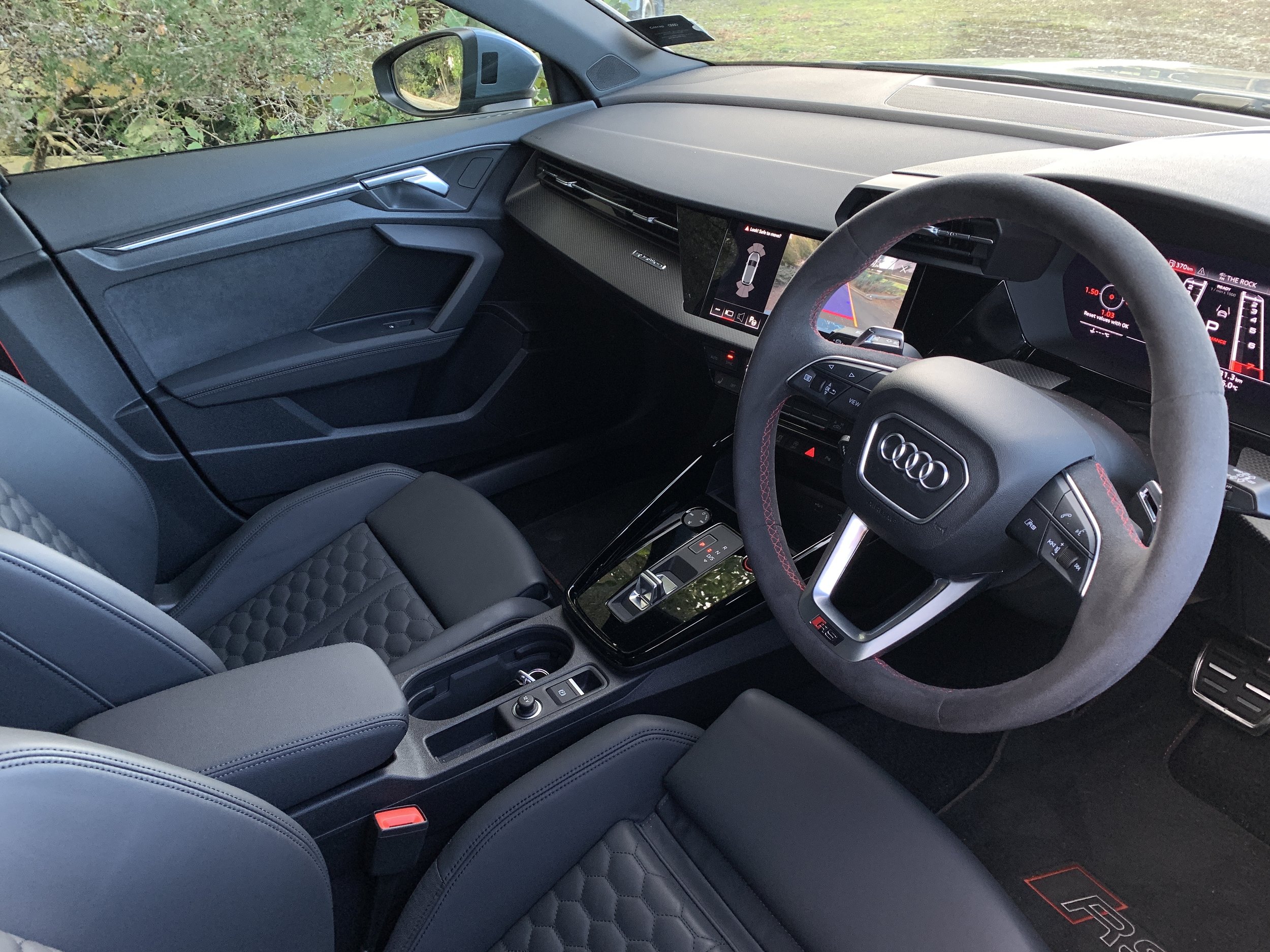Audi RS 3 roadtest review: Quattro to the power of five
/Ingolstadt vowed that, as the last of a very special breed, this one would be particularly memorable. They weren’t wrong.
Price: $112,500
Powertrain: 2.5-litre turbo petrol inline five-cylinder with 294kW/500Nm, all-wheel-drive, seven-speed dual clutch transmission, AWD, economy 9.5L/100km, 216g/km CO2.
Vital statistics: 4389mm long, 1851mm wide, 1436mm high, 2631mm wheelbase.
Like: Best chassis yet, clever drivetrain tech, special engine.
Not so much: Dated displays graphics, there’ll never be another like it.
SOME cars have such star appeal it’s hard to contemplate how they could ever not be successful.
So it goes for the Audi RS 3. Derived from the five-door hatch, this ultimate version of the A3 holds so many ace cards.
The least expensive RS model is surely the best value: It demands no sacrifice in terms of quality or practicality over the donor yet is so massively superior to the mainstream model for performance intent there’s no point comparing.
So much comes back to it being the right-sized car with the right-sized powerplant. The stupendousness of the performance resulting from it being blessed by having the most powerful five-cylinder engine in Audi's history something that takes even hardened hot hatchers by surprised.
To say this car is fast is understatement. Even calling it incredibly so doesn’t quite hit the mark. Basically, development from by the brand's legendary high-performance RS division has meted this turbocharged 2.5-litre the kind of acceleration that you’d expect only supercar owners can understand.
Audi, BMW and Mercedes-AMG all work assiduously at developing product that is good enough to win the mantle of ‘fastest and most powerful’ hot hatch.
The Audi has let that one slip from its grip every once in a while, but overall has secured and held onto the title more than the others. Obviously, that gives the RS3 some real appeal.
There’s more, of course. Quattro four-wheel drive is also a winning and equally iconic ingredient. That sure-footed all-paw enhancement inspires handling confidence in most weather conditions. It’s an element that really suits NZ’s driving environment, particularly on our secondary, rural roads. Which, incidentally, the RS 3 is perfectly sized to tackle.
Other factors supporting ownership has been that it’s also it’s far from being the most expensive RS to run and, come resale time -providing you’d ever want to get to that point – it rewards with the strongest residual value.
Really, then, if the automotive world and all that fuels it was just to come to a sudden and eternal stop right now, this would be all the car you’d ever need, right?
Well, it’s a nebulous argument. Global spin is remorseless, the motoring world is becoming a different place and, all too soon, this particular wild ride will be over.
It has to be. Electric is very much now central to Audi’s future and, where the parent goes, the RS outfit follows. Its first electric car is out and more will follow.
There’s surely going to be another RS 3 – the badge has just too much strength to allow its retirement - but the maker has already indicated the fab five-cylinder engine won’t represent in that fourth evolution. The thirst for petrol, the high CO2 … it’ll be out after having made three strikes.
That’s the road ahead. In the here and now, there’s this newly-arrived edition that’s again loaded up with all the features from the ‘how to’ book of hot hatches, plus something fresh, a trick new RS torque splitter for added rear-wheel-drive goodness. Plus, it delivers drift-ability. Crazy, right?
It’d be doing the car a disservice not to first mention the kerbside appeal. It’s well muscled, in all the right ways.
Attached to a body that has been widened and lowered, the RS enhancement package features extended side sills, a honeycomb grille and accompanying side intakes, not for show (as is so often the case) but with genuine relevance, to help to keep engine and brakes sufficiently cooled. It has spoilers front and rear. Aluminium-look door mirrors, twin oval tailpipes, and LED lights all-round. Nardo Grey, the current hero hue, is great; it suits the shape and the size.
This time, pocket rocket achieves a bespoke illumination signature that includes a 15-LED panel that, when the car is unlocked, plays an 'RS 3' and a chequered flag animation. A bit cringe? Yeah, maybe a touch, but Audi is a company that has long been using lighting as a key element of its exterior design. So it’s understandable why they felt the need in this instance.
It’s no trick of the eye to think the car’s front appears wider than the rear. The front wheel track has been pushed out by 33mm and the rear by 10mm compared with the S3 Sportback, while overall ride height is reduced by a further 10mm (BTW RS 3 sits 25mm lower than a standard A3).
Like its predecessor the RS 3 sports two exhaust outlets, large enough to swallow and orange, on either side of the diffuser. It’s styling showmanship as they actually house two smaller outlets on each side.
Audi repeats the honeycomb pattern inside the car, as it is stitched into the central sections of the bolstered sports seats. The 'virtual cockpit plus' 12.3-inch digital instrument display standard to all A3 achieves more functionality here, with RS-specific readouts, from a G-meter to blinking shift light indicator.
When you aren't using the 10.1-inch touchscreen for your Apple CarPlay or Android Auto, you can view the coolant and gearbox oil temperatures or check out the numerous set-up options, including activation of the skid mode. Which obviously should never, ever be used on the street. I’d had my fill with it on a special day at an appropriate location, so left it alone for this test. Yes, it works well.
There are more than enough RS3s across the generations in NZ to warrant a special club; when cognoscenti get together they’ll all be talking about the joy of a common engine, but those buying into the latest shouldn’t feel they have nothing new to add. Despite it being on borrowed time, Audi’s engineers have continued to improve this legendary mill. Apart from elevating torque to a stupendous 500Nm, the peak power output arrives 250rpm earlier than before, at 5600rpm, and lasts until 7000rpm.
It’s a heck of a swansong. Zero to 100kmh occurring in 3.8 seconds puts this model into the supercar league; that’s the same figure that, within Audi-dom, was once the preserve of the first-generation R8 V10. The NZ model is limited to 250kmh. Europe achieves one that snares 290kmh. Honestly, even the lower optimal is serious performance from a five-door hatch.
The true beauty of the car doesn’t come from its outright straight-line pace so much as how well it carries speed; so long as conditions allow, it’s simply astounding.
The original car was a bit of a trick, as it had tendency to be nose-led. The second one had better balance, but it’s this third that delivers breakthrough.
Though drifting is the big headline thing with the newly developed RS Torque Splitter, the talent a technology that replaces the previous multi-disc clutch pack with an electronically controlled multi-disc clutch on each of the drive shafts is much broader.
The idea is that, through corners it can shift torque to the outside wheel to reduce understeer and enable the car to better rotate around the apex. Turn-in is also improved thanks to new pivot bearings that add one degree more negative camber, while the rear end gets a new stabiliser bar (designed to fit around the RS Torque Splitter) and has stiffer wheel carriers.
Sounds complex, but it works. The RS 3 has always been an absolute buzz on winding roads, simply because the Quattro four-wheel drive system lends so much grip in most situations. But now it’s not just about that, but proper feel as well. The latter ingredient is what makes this version sensational; more than just the g-making traction, there’s fast turn-in and direction changes, the whole car feels more centred, as if you’re directing it with your butt cheeks.
Adaptive dampers also play a big part. Comfort is your everyday choice, but when fun is sought, a switch to 'Dynamic' is required. It’s a stiffer setting, of course, but makes the car pointier.
The steering feel is improved by a variable ratio setup that has more life to it than before. Even with this, you’re scratching the surface. Track days are a must, frankly; they’re going to provide the only responsible forum for finding out what it can ultimately do. For those occasions, the RS Individual mode will be best. Giving the brakes a workout won’t be an issue; it features 375mm discs up front and 310mm discs on the rear. Plus that new airflow control, Audi claims, improves brake cooling times by 20 percent.
Ironic that the RS division has finally largely sorted the engagement side of things with the last of the ‘fives’; assuredly, they already have the talent to make an electric model just as quick, perhaps not for overall velocity but certainly for sprint times. Packaging a battery into a car this size will be a challenge, all the moreso keeping the kilo count in check. Until those factors are addressed, it’s hard to imagine how an EV equivalent could have the measure of the RS 3 as it presents just now. But when you consider how much better some EVs have become even over the past five years, it would be daft to say that these are improbable targets.
In a way, it’s surprising Audi now puts all this talent into a five-door car, because it’s so driver-centred. But, of course, practicality inevitably has to come into it. In respect that side of things, the roots in the A3 Sportback pay dividends. There’s decent head- and legroom for a couple of adults in the front and you could squeeze another couple of tallish types on the back. It suits four more than five, because the large transmission tunnel in the floor limits the foot space. Ultimately, it’s the sporty ride and exhaust noise that’ll get to sensitive types. Let ‘em walk.
The price is not be taken lightly – not argument, it’s an expensive model – and, of course, feeding it comes at a cost. Fuel economy and emissions are no better than those from its rivals, which means they’re not for the tight-pocketed. Drive a car like this hard, and you’ll be on first-name terms with local pump jockeys. That purchase price now includes a Clean Car penalty hit of $1725, courtesy of the CO2 count being 24g/km on the wrong side of the limit. If you’re considering a car like this, economy probably isn’t your number one priority. But maybe spare a small thought for the environment.
It’s a special car, part of a special club. One no longer accepting new members. Well, maybe just one more.
Time to mention the Volkswagen Golf R. So close to being a RS 3 yet also so different through running a four-cylinder that, though also famous and with a fabulous lineage, hasn’t quite the same firepower, with 59kW and 100Nm less.
Still, buy that First Edition and you’re getting most of the same driving experience, for significant saving. I’m not saying it’s an absolute equal, but would simply suggest it’s always good to have a Plan B.





















